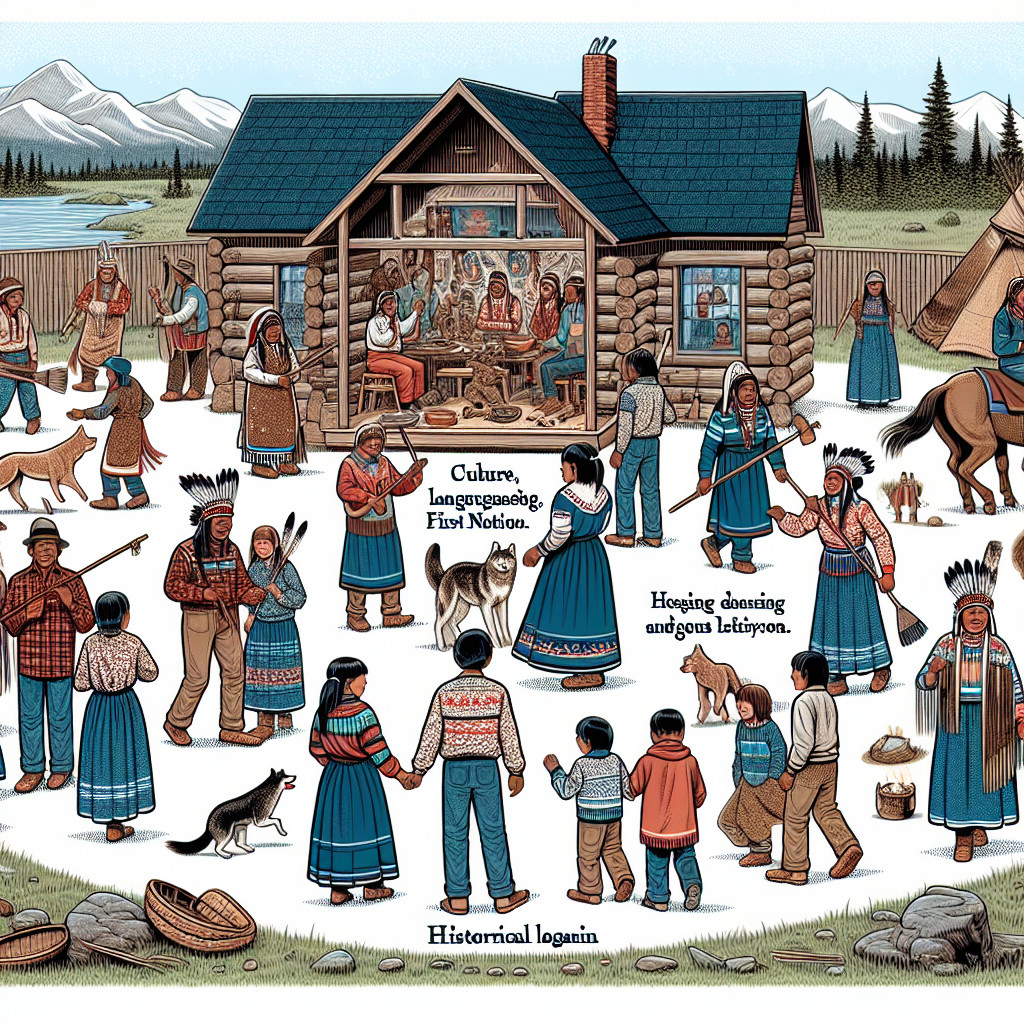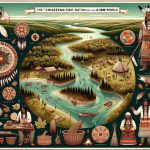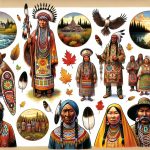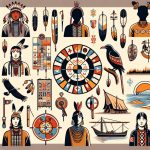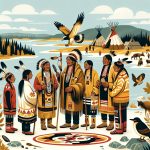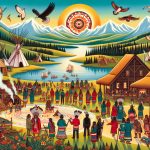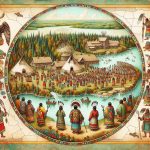Nestled within the heartland of Manitoba, Canada, the Keeseekoowenin First Nation (Ojibwa) is a vibrant community rich with history and culture. Originating from the larger Anishinaabe-speaking peoples, they have maintained a strong link to their ancestral roots, despite the shifting socio-political landscapes over centuries. Historically, they were known as semi-nomadic hunters and gatherers, intimately connected to the vast forests and lakes of their territory. Today, they reside primarily on their designated reserve, Keeseekoowenin Ojibway First Nation 61, where they continue to uphold and celebrate their cultural identity amidst modern challenges.
Organización social y política
Índice
The social and political structure of Keeseekoowenin Ojibwa is deeply interwoven with their clan system, known as “doodem,” which plays a central role in community life. Each clan, represented by animals such as the Bear, the Eagle, and the Wolf, has distinct roles and responsibilities that contribute to the functioning of the society. Leadership is traditionally vested in the hands of the elders and the chief, who are respected for their wisdom and connection to the spiritual realm. Decision-making processes are communal and consensus-driven, reflecting the democratic ethos inherent in their cultural fabric. The spiritual leaders or ‘Midewiwin’ hold a special place, entrusted with maintaining the spiritual well-being of the community.
Lengua
The Keeseekoowenin Ojibwa speak a dialect of the Anishinaabe language, which belongs to the Algonquian linguistic family. This language, vibrant and full of poetic nuance, is considered at risk, though efforts are underway to revitalize it. Language in this community is not just a means of communication but a carrier of cultural knowledge and spiritual power. It embodies the community’s connection to the land and the universe, with certain expressions that uniquely capture the Anishinaabe worldview.
| Palabra en Anishinaabe | Significado |
|---|---|
| Nibi | Agua |
| Mitig | Árbol |
| Aki | Tierra |
| Manidoo | Espíritu |
| Bimaadizi | Vida |
| Asin | Piedra |
Territorio y relación con la tierra
The geographical landscape of Keeseekoowenin Ojibwa’s ancestral land is characterized by dense forests, clear lakes, and the rolling Riding Mountains. Every element of this land holds spiritual significance, from the smallest stone to the expansive sky. Sacred sites dot the landscape, serving as places for spiritual ceremonies and community gatherings. The connection to land is not merely utilitarian but deeply spiritual, with practices such as the ‘wiigwaasabak’ (birch bark harvesting) reflecting a sustainable relationship with nature.
Creencias religiosas y cosmovisión
The Keeseekoowenin Ojibwa view the world as a dynamic web of relationships among living beings and spiritual entities. Central to their belief system is the “Great Spirit” or “Gichi-Manidoo,” who interacts with the world through various spirits of nature. Life cycles and natural phenomena are imbued with spiritual significance, guiding community practices and personal conduct. Rituals such as the ‘pow-wow’, a gathering featuring drumming, dancing, and singing, are vital for reinforcing the community’s spiritual identity and history.
Sabiduría ancestral y medicina tradicional
Traditional knowledge, passed down through generations, encompasses an array of practices involving medicinal plants and spiritual healing. The ‘mashkiki’ (medicine) woman or man uses herbs like ‘wiingashk’ (sweetgrass) to both cure physical ailments and cleanse spiritual impurities. Such practices highlight a holistic approach to health, integrating body, mind, and spirit.
Cultura y tradiciones
Cultural expressions through dance, music, and storytelling are pivotal in the Keeseekoowenin Ojibwa’s societal fabric. The ‘jingle dress dance’, adorned with metal cones that create a distinctive sound, is performed at pow-wows, encapsulating both artistic expression and spiritual healing. Storytelling, rich with tales of ‘Nanabozho’, the trickster figure, serves as both entertainment and moral instruction.
Vestimenta
Traditional attire, often worn during ceremonies and pow-wows, features intricate beadwork and symbolic colors that convey stories and statuses. Materials like hide, birch bark, and dyed porcupine quills are crafted with immense skill, demonstrating a deep respect for the natural resources provided by the land.
Educación y preservación cultural
Knowledge transmission is primarily oral, supplemented by educational initiatives that include language revitalization programs and cultural workshops. Elders play a crucial role, embodying living libraries of the community’s lore and language. Initiatives such as the Keeseekoowenin Heritage Park are testament to the community’s commitment to preserving and teaching their heritage.
Reflexiones
The resilience of the Keeseekoowenin Ojibwa is a testament to the strength and adaptability of their cultural traditions. In the face of modern challenges, they continue to thrive, contributing a unique perspective to global cultural diversity and reminding us of the profound ways in which humanity can connect with both spirit and nature. Their legacy is a poignant reminder of the enduring power of community and the deep ties that bind us to our ancestral lands.

